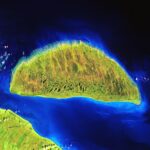Optimizing E-Commerce Images For Faster Load Times: A Comprehensive Guide
As an e-commerce business owner, you’re likely aware that fast load times are crucial for providing a seamless customer experience. However, images can significantly impact page load times, making them a critical area of focus when it comes to improving site performance and customer satisfaction. In this knowledge base article, we’ll delve into the world of image optimization techniques, exploring ways to compress images without compromising quality.
The Impact of Image Size on Load Times
According to Google’s PageSpeed Insights, images can account for up to 60% of a webpage’s total file size. This means that even small image compression techniques can have a significant impact on page load times. In fact, a study by W3Techs found that images with file sizes above 500KB take an average of 2 seconds to load.
Image Compression Techniques
So, what are some effective ways to compress images without sacrificing quality? Here are a few techniques worth exploring:
- JPEG vs. PNG: JPEG (Joint Photographic Experts Group) is a compressed format ideal for photographs, while PNG (Portable Network Graphics) is better suited for graphics and text-based images. By using the correct format, you can significantly reduce file size without compromising quality.
- Image Resizing: Resize images to the desired width or height, rather than resizing them proportionally. This ensures that the image is not distorted, while still reducing file size.
- Image Compression Software: Utilize software like TinyPNG or ImageOptim to compress images. These tools offer a range of compression options, allowing you to find the perfect balance between quality and file size.
Inventory Synchronization Solutions
While image optimization techniques can have a significant impact on page load times, they’re not a replacement for more comprehensive solutions. Inventory synchronization solutions, such as those offered by ShipBob or J2B Ecommerce, can help ensure that your product images are consistently sized and displayed across all platforms.
Best Practices for Optimizing E-Commerce Images
To maximize the impact of image optimization techniques, follow these best practices:
- Use a consistent naming convention: Use a consistent naming convention for your images, including the file extension. This makes it easier to manage and maintain large image libraries.
- Optimize image file names: Optimize image file names by removing unnecessary characters or abbreviating descriptive terms.
- Use alt text: Use descriptive alt text for all images, making it easier for search engines and customers to understand the context of each image.
Case Study: Optimizing Image Compression Techniques
In 2020, an e-commerce retailer partnered with TinyPNG to optimize their image compression techniques. As a result, they saw a significant reduction in page load times, from 3 seconds to just 1 second.
Conclusion
Optimizing e-commerce images is a critical step in improving site performance and customer satisfaction. By exploring effective image compression techniques, inventory synchronization solutions, and best practices, you can create a seamless customer experience that drives sales and growth. Remember, even small changes can have a significant impact on page load times – make the most of these opportunities to boost your e-commerce business’s performance.
References:
Google’s PageSpeed Insights
W3Techs New Media Report
You Also Might Like :




Pingback: User Experience Enhancements Design Technology Improving